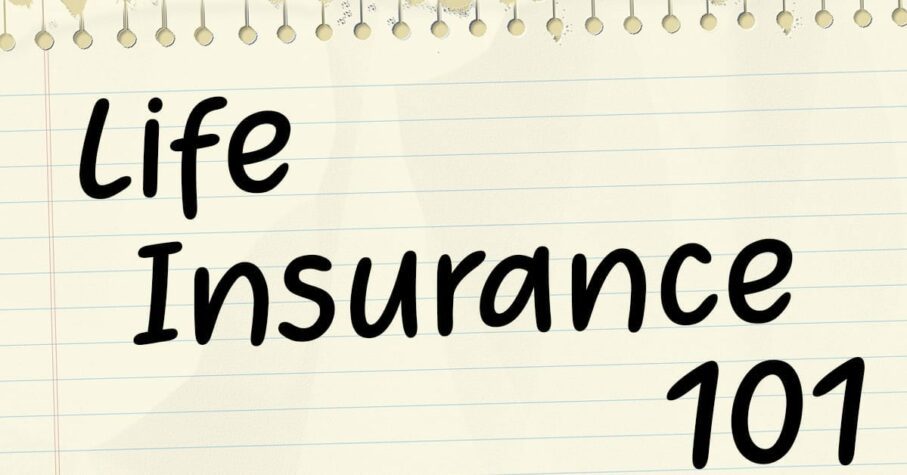
By Burt Helm | Wealthsimple
The first rule of life insurance: Stop pretending the problem will go away if you ignore it. The second rule is that it’s actually not that hard, as long as you avoid the most common pitfalls.
You could make the argument that buying life insurance is the pentathlon of adulting. In service of being responsible and planning for the future, you fill out forms, estimate your living (and dying) expenses, and navigate phone calls with financial professionals to discuss things that are probably boring to financial professionals. There’s even a medical exam portion of the event. Until, finally, the marquee moment: You write your first large-ish cheque to a faceless insurance corporation — a practice of yearly cheque-writing that, if you’re lucky, will last decades — knowing full well that you may never, ever see that money again during your life here on Earth.
If the life-insurance industry practised honesty in advertising, its motto would be: It’s boring! It’s moderately expensive! It’s morbid!
So, you may ask, why do it? Wouldn’t that money be better off in a low-fee portfolio built with beautiful software, by intelligent humans, using Nobel Prize–winning financial theory? Or spent on that trip to Machu Picchu because we’re all supposed to be living in the moment anyway? Well, the short answer is: You do it because, after you die, you don’t really want the people you love living under a bridge, huddled around a barrel fire, cursing your name. And because it makes financial sense.
So how does it work? Who should sign up for it? And how do you even do it? To answer these and other insurance-y questions, we devised this short guide to probably the morbid-est part of being a financial grown-up.
How do I know if I really need to get life insurance? Like really really.
If you have children, or a spouse, or anyone else who depends on you financially, then life insurance is probably for you. Especially if you have debts, mortgages, loans, and other things that those nice people are going to be liable for paying. And double especially if your bank statements don’t reflect a sum so large that it will cover the living expenses of those nice people who depend on you in perpetuity. So, lock in your good health, and protect your family for future expenses they may incur after you’ve gone (i.e. university tuition) in case you die before you’ve had time to save enough money.
But even if you are untethered by any human who needs your money, it may be something you want to do out of courtesy. A small policy can cover the costs of whatever funeral or memorial you’ve stipulated in your will. (You do have a will, right?) Untimely death should be sad for your loved ones, not sad and expensive.
There are all kinds of life insurance. I think. At least they advertise all kinds of life insurance. What kind should I get?
For most people, the answer is something called term life insurance. That type of policy means you pay a premium every year for a certain number of years, typically 10-, 20-, or 30-years. It’s the same amount every year, determined when you get the policy. If you die during that period of time, the insurer pays a predetermined amount of money the beneficiary (i.e., the person you told them to pay when you got the policy). If you don’t die, which is also nice, the insurance company keeps the money and you never see it again. It’s as simple as that.
Term life insurance makes sense because it serves the most basic purpose of life insurance: It gives you peace of mind that your loved ones will not become destitute. And it does this at the lowest possible price, during the years when you need it most — when you are in your prime working years and your family is growing. It’s so common, it’s what people generally mean when they say “life insurance.”
Are there other options to term life insurance?
The other major category is called permanent insurance, which provides lifelong protection, and the ability to accumulate cash value on a tax-deferred basis. Unlike term insurance, a permanent insurance policy will remain in force for as long as you continue to pay your premiums. It also serves as an investment vehicle. These policies include “Term To 100” (a uniquely Canadian product) and “universal life” (you can choose from a shelf of investment products). Lastly, there is “whole life” (you can’t choose where your investments go), and within* that*, there are two subsets – participating and non-participating.
Participating whole life is less common in Canada but is available. These policies are structured a bit like co-ops. If there’s extra money in the funds, for instance if a policy holder lives longer than the actuaries anticipated when writing the policy, the money is refunded to the policy holder through dividends. Over time, this can be a huge benefit to a policy holder. As health care improves, lifestyles improve and average life expectancy in Canada improves, participating whole life policy holders benefit greatly.
So maybe I should get permanent life insurance?
Whole life premiums are extremely expensive, up to 10 or 20 times the rate of comparable term life insurance. Also, these policies usually come with high fees that erode the overall rate of return. Having said that, your individual circumstances can make all the difference.
Things to consider:
- Do you like the idea of someone you love or a charity getting money when you die?
- Do you want to have to liquidate investments to pay taxes due on death?
- Do you like the idea of a safe investment (whole life), with a good return (enhanced through tax-deferred growth and tax-free insurance proceeds), that provides flexibility and takes zero management time?
Unlike term life insurance, these permanent insurance policies never expire as long as you pay the premiums. That means your beneficiaries can get a big payout, even if you kick it at the ripe old age of 90. Many permanent life insurance policies, including whole life, participating whole life and universal life, also have a cash-value component — funds that you can either borrow against or withdraw from while you’re still alive. What’s more, the cash you contribute is tax-deferred and can appreciate every year. Sounds like a combo of life insurance and a retirement account, doesn’t it?
But it’s not for everyone.
Permanent life insurance is a good option in the right circumstances. It’s sometimes recommended by financial advisors (like the ones who work here at Wealthsimple, whom you can trust because they don’t actually sell life insurance) when their clients have maxed out contributions to tax-reducing accounts (RRSPs, TFSAs, RESPs) and still have more savings than they could spend in a lifetime.
Consider this example. A 25-year-old woman in excellent health in Canada will pay about $12,400 a year for a $1-million whole life policy (If you’re not a young healthy woman, the premiums are more expensive). A comparable 20-year term life policy would cost only $470 per year. The difference is nearly $12,000 per year. At the end of 20 years, this woman’s whole life insurance policy will have a cash value of approximately $381,000. This is in addition to the $1 million payout her beneficiaries receive upon her death.
By comparison, she can buy term life insurance and invest the $12,000 she saved every year in non-registered investments (Because she’s maxed out her tax reducing accounts and still has more savings than she can use during her lifetime.) If she earns five per cent annual interest, over the course of 20 years, she’d have $316,000 (assuming she is paying a marginal tax rate of 47.97% in Ontario.)
So as an investment vehicle for savings you know you will not need during your life time but want to leave to your beneficiaries, whole life insurance makes more sense. It can also be a tool for certain types of estate planning or, in some circumstances, reducing your tax burden. In Canada, proceeds of life insurance are tax free, as long as the beneficiary named isn’t the deceased’s estate. (In that case, the proceeds may be subject to probate taxes.) If you suspect your circumstances may warrant such a strategy, a wise move would be to ask a financial advisor for some advice.







